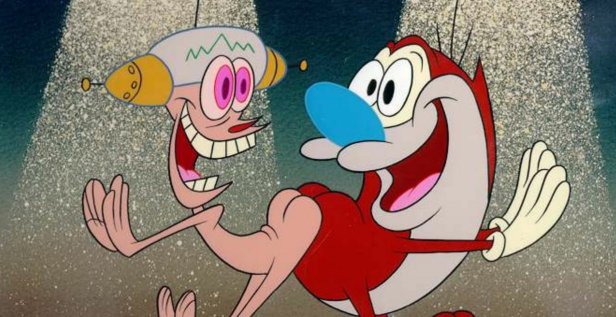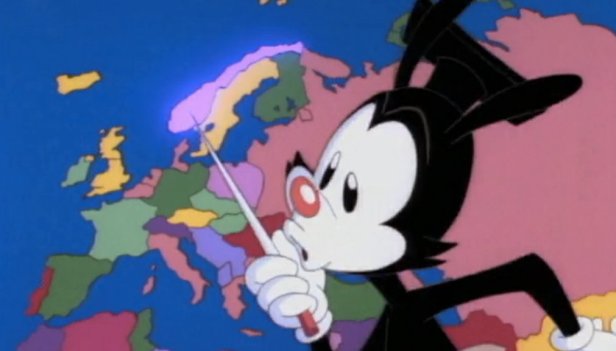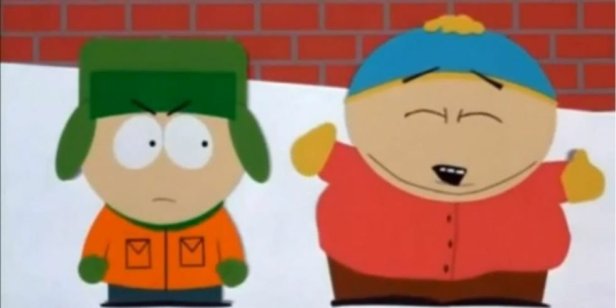
When animation first migrated from the big screen to the small screen in the fifties, Rocky and Bullwinkle was arguably the only really great series for years. The only animated shows from the sixties I really liked were from Hanna-Barbera (The Flintstones, The Jetsons, Jonny Quest, Scooby-Doo) and in the seventies Filmation introduced the excellent Fat Albert and the Cosby Kids and Star Trek: The Animated Series, but animated television (and animation in general) was in a very poor state in the late seventies and early eighties.
The days of brilliant auteurs like Tex Avery, Chuck Jones and the Fleischers were feeling farther and farther away as the pinnacle of original mainstream animation were basically toy commercials (He-Man, Care Bears, Transformers). While among the cartoons of the eighties there were definitely some entertaining shows (Muppet Babies, DuckTales, Teenage Mutant Ninja Turtles), the truly creative shows were scarce, until CalArts students started taking over television.
Before Walt Disney died, he helped found the California Institute of the Arts, which was a brilliant move because it taught art students the “Disney way” to make films, almost as if Walt planned the Disney Renaissance of the early nineties himself. It was those students who led the charge in the animation explosion of the nineties.
The first cartoon of the eighties that started feeling like it was created by human beings and not corporations was the highly entertaining CBS series Mighty Mouse: The New Adventures, helmed by animation legend Ralph Bakshi (Fritz the Cat, American Pop) and John Kricfalusi, future creator of The Ren & Stimpy Show. This show was unexpectedly wacky in a way unseen since the days of Looney Tunes, and its crew includes such future animation legends as Eddie Fitzgerald, Tom Minton, Rich Moore, Jim Reardon and Andrew Stanton.
Even though it had a short run due to trouble behind the scenes (that’s another story), the show was popular and incredibly influential. Cartoons like A Pup Named Scooby-Doo and Tom and Jerry Kids were created due to the success of Muppet Babies, but they felt way more influenced by Mighty Mouse in terms of their cartoonyness (although the film Who Framed Roger Rabbit contributed to this trend as well).
Primetime sitcom The Simpsons was such a cultural phenomenon that animated series aimed at adults were having just as historical a moment as the Saturday morning cartoons, and this has not slowed down to this day, proven by the enormous success of Rick and Morty, Bob’s Burgers and Bojack Horseman, and even irreverent youth-oriented shows like Adventure Time owe a debt to The Simpsons.
Honestly I don’t know if the golden age of animation ever really ended because there are currently a ton of brilliant animated series to choose from on various platforms, but the nineties were definitely when it began. The amount of good animation from this decade is staggering, even if you don’t include the theatrically released films of Disney, Pixar and DreamWorks.
A lot of good shows got left off this list, but these are all the animated shows from the nineties that I love the most, just to give you an example of how fruitful in quality that decade was.
The Simpsons (FOX)
Tiny Toon Adventures (Syndication)
Bobby’s World (Fox Kids)
Doug (Nickelodeon)
Rugrats (Nickelodeon)
The Ren & Stimpy Show (Nickelodeon)
The Adventures of Tintin (HBO)
Aeon Flux (MTV)
Batman: The Animated Series (Fox Kids)
X-Men (Fox Kids)
Animaniacs (Fox Kids)
Beavis and Butt-Head (MTV)
Rocko’s Modern Life (Nickelodeon)
Space Ghost Coast to Coast (Cartoon Network)
Pinky and the Brain (Kids’ WB)
Dr. Katz: Professional Therapist (Comedy Central)
Freakazoid! (Kids’ WB)
The Maxx (MTV)
Dexter’s Laboratory (Cartoon Network)
Arthur (PBS)
South Park (Comedy Central)
Recess (ABC)
The Angry Beavers (Nickelodeon)
Johnny Bravo (Cartoon Network)
Daria (MTV)
The Wild Thornberrys (Nickelodeon)
The Powerpuff Girls (Cartoon Network)
Family Guy (FOX)
Futurama (FOX)
Rocket Power (Nickelodeon)
SpongeBob SquarePants (Nickelodeon)
Courage the Cowardly Dog (Cartoon Network)









These shows were all significant in changing animation’s image as juvenile entertainment. The great thing about television today is that TV networks are more willing to experiment with many diverse types of animation, as opposed to the animated films of the big screen which still very much follow the formula established by Disney, with exceptions few and far between.
Whereas the limited budgets of TV animation and Japanese anime used to seem like a hindrance when compared to fully animated feature films, these days it seems like the most bold animation is coming from television and the web, and I think that’s because having a limited budget forces you to be creative in more ways. That’s why I don’t see the golden age ending any time soon.
In the 1940s, Disney had the best animated features but Warner Bros. gave its animators more creative freedom. The same can be said today when you compare Disney and Pixar to Cartoon Network and Adult Swim. There is a place for both forms of entertainment, but it wasn’t until the nineties that we started to go back to that.

I probably prefer the shows of the 60s and 70s.
LikeLiked by 1 person
Those shows from the 60s and 70s had a certain charm.
LikeLiked by 1 person